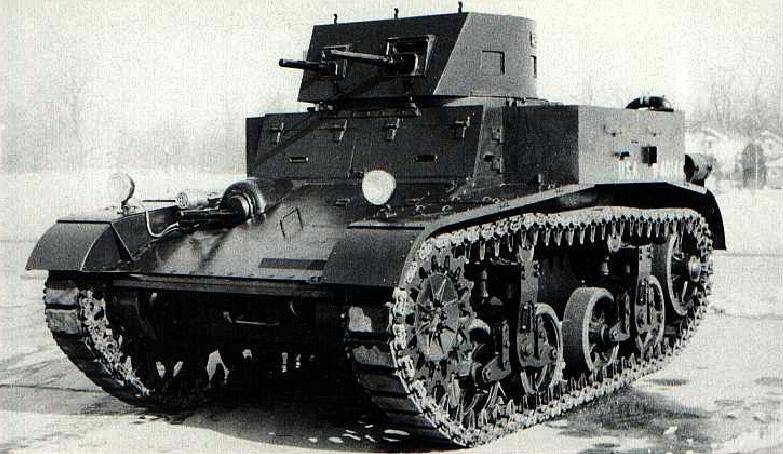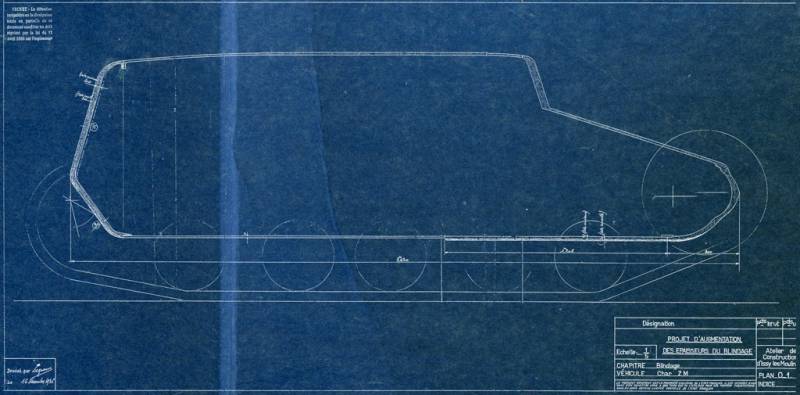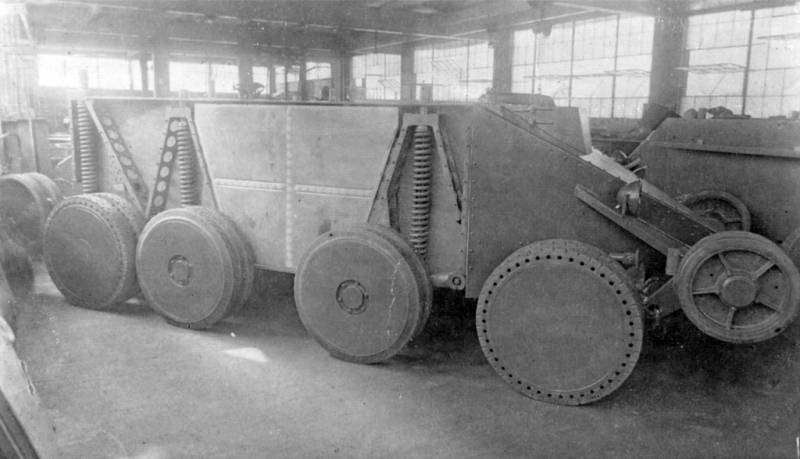Illegal borrowing. Intelligence and Soviet tank building
Extractive organs
Soviet Russia of the 30s only embarked on the path of industrialization, experienced a shortage of both material and highly qualified labor resources. However, the understanding that everyone was building up military potential around made it necessary to develop their own military equipment in all possible ways and in spite of everything. One of the most important roles in this was played by domestic intelligence.
The planning and controlling body providing the link between military-technical intelligence and the defense industry complex was the Military Technical Bureau under the Defense Committee subordinate to the Soviet government. At different times, the bureau and the department included Voroshilov, Molotov, Tukhachevsky, Ordzhonikidze, Yezhov and, of course, Stalin. Later, in 1939, this body received the long name: Department of Scientific Research and the Use of Foreign Technology at the Defense Committee under the Council of People's Commissars. The department staff included 21 people, each of them was selected by the Central Committee of the All-Union Communist Party of Bolsheviks. A report by Molotov to Malenkov of June 28, 1938, in which he asks
One of these was engineer Sergei Vasilievich Petrenko-Lunev, who graduated from the electrical engineering department of the Higher Technical School in Karlsruhe and the Military Academy. Petrenko-Lunev knew Hungarian, Italian, German, Romanian and French, worked at one time as an attaché in the embassies of the Soviet Union in Germany and Italy.
The engineer remained in the post of secretary of the bureau until May 1937, after which he was arrested, charged with espionage, and shot.

Interestingly, in professional slang, military-technical intelligence, even in internal correspondence, was called a “mining authority” and was far from always characterized on a positive side. So, in September 1938, the secretariat “complains” about scouts:
That is, agents abroad worked, but not always according to given programs and with a general decrease in efficiency. In 1937, out of 16 missions, intelligence did not cope with 7, and the following year 23 out of 28 orders did not work. Statistics were kept on the amount of materials transferred from intelligence to industry: 1937 in 518 and only 1938 in 384. The people's commissariats also conducted their own assessment of the value of the data provided: in 1936, 48% of the data were useful, 29% were of no interest (the rest, apparently, was something average in significance), in 1937 this ratio was 38% / 32 %, a year later, everything worsened: 17% and 55%, respectively. Two reasons are clearly visible: firstly, typical Soviet planning without taking into account many factors, and secondly, echoes of the repressions of the late 30s.
As a result, the following tough resolution of the Bureau Secretariat appeared:
To propose to the NKVD ... To shift their attention to the fulfillment of VTB tasks in the first place ... To pay attention to the quality side of the transmitted material ... To focus the mining authorities on the acquisition of materials, primarily in the following military industries: aviation, navy, artillery, gunpowder. "
Despite such criticism, the effectiveness of the “extractive organs" in some cases was striking.
Here we will allow ourselves to move a little away from the central theme of tank construction and reveal history on the development of the production of domestic plexiglass - artificial glass. May 8, 1936 on the Molotov’s desk from intelligence laid "material on the production of artificial glass" Plexiglass "." Already on May 9, this report was sent to the People’s Commissar of Heavy Industry Ordzhonikidze, and after all the approvals on August 9 of the same year, the Institute of Plastics and Soyuzkhimplastmass Trust received an urgent task to develop an experimental workshop for plexiglass. The term was unprecedented - on February 1, 1937, it was required to launch a workshop. It should be noted that earlier the Soviet Union wanted to buy artificial glass production technology from the Germans, but the price was sky-high - about 2,5 million marks. As a result, the cost of military-technical intelligence and the cost of completely different amounts.
May 14, 1938 at a meeting in the special technical group under the People’s Commissar of the Defense Industry stated:
And on September 21, 1938, the head of the special technical group informed VTB:
About how much information was needed on the latest foreign tanks, the report of the People's Commissariat of Medium Machine Building for 1939 speaks very well. In it, the people's commissar’s leadership insists on obtaining general drawings (with cuts) and tank assemblies, more complete coverage of superheavy tanks, the designs of their inspection devices, underwater walking devices, data on passive and active anti-tank defense equipment, and information on the experience of using tanks during German attacks on Poland and on the western front. All intelligence information, explained in the report, should enter the industry immediately after appearing in the country. The Soviet Union was actively preparing for the war of motors, and any news from abroad were important.
In the interests of secondary engineering
Let us consider in more detail what valuable materials the NKVD "extracting organs" supplied to the homeland for tankers.
Of particular importance were contacts with the United Kingdom, which even managed to quite officially redeem several samples of armored vehicles. But USSR intelligence also delivered a lot of interesting information through illegal channels. Candidate of historical sciences Vladimir Vasiliev in a series of articles in the Military History Journal says that the British managed to get secret information about advanced technologies for the production of armor. Vikkers then worked on cemented chromium-nickel-molybdenum armor, the nuances of which fell on the table as the leadership of the Soviet intelligence and tank engineers. They obtained not only secret documents, but also completely ready-made samples - in 1938 a piece of 5-mm Hadfield armor measuring 820 by 530 mm was transported to the USSR. Chemical analysis provided a fairly complete picture of the composition of the British billet, but the technical capabilities of production did not allow at that time to organize the smelting of such steel. Only in 1941 on the T-50 tank for the first time appeared Hadfield alloy tracks.
The French tank industry, despite the regime of secrecy, reluctantly shared with the Soviet engineers the tactical and technical characteristics and photo illustrations of the light tanks Renault ZM and VM, as well as the floating Laurent. The documents were at the disposal of tank builders in April 1937. This is not to say that there were some direct borrowings from the Soviet side, but non-standard French solutions aroused considerable interest: the transmission on the port side (Renault VM), rubber blocks as cushioning track rollers, as well as the molded case of Renault ZM. The previously obtained data on the medium French tank B1, Renault C2 and VO were also studied. Moreover, there is evidence that at the Mariupol Engineering and Izhora Metallurgical Plants, samples of the armor of the hull and turret of the Renault VM tank were tested. As with Hadfield's steel, intelligence from France provided industry with more than documents and photographs.
The Soviet side, as one of the leading tank-building powers in its time, had a lot to do with Soviet military-technical intelligence. First of all, a special interest in Walter Christie's speed cars. This was not always helpful. So, since the end of 1935, news has come from the United States about the development of a tank that is suspended under the fuselage of an aircraft, as well as capable of moving on a combined wheeled-tracked track. The chief of intelligence of the Red Army, Semyon Uritsky, writes on this subject to Clement Voroshilov:
Materials on the M.1933 machine were transferred to the Kharkov Locomotive Plant, but did not find a serious continuation. In the Soviet Union, and without any ideas, Christie conducted experiments on "flying tanks", hanging armored vehicles under the TB-3 fuselage. In addition to data on Christie's vehicles, tank builders received drawings of the M2A1, M2A2 and Combat Car M1 tanks adopted for use in the USA. In particular, rubber-metal tracks were of particular interest, the materials on which were highly recommended to rethink and organize production. In addition, the illegal residency portfolio included information on the parabolic reflectors of tank headlights and the design of the whip antenna of the radio station — these intelligence data formed the basis for similar domestic developments.
As you know, the American heritage is not the best way affected some of the design features of the best tank of the Second World War - T-34. In particular, atavism can be considered a Christie type tank suspension. Here, Soviet intelligence could make a difference. Before the war itself, the drug addict of defense Tymoshenko was informed about the results of the test of the German T-III, following which he proposed replacing the complex and bulky T-34 suspension with a torsion bar. But it did not work out. However, this is a slightly different story.
To be continued ...


Information